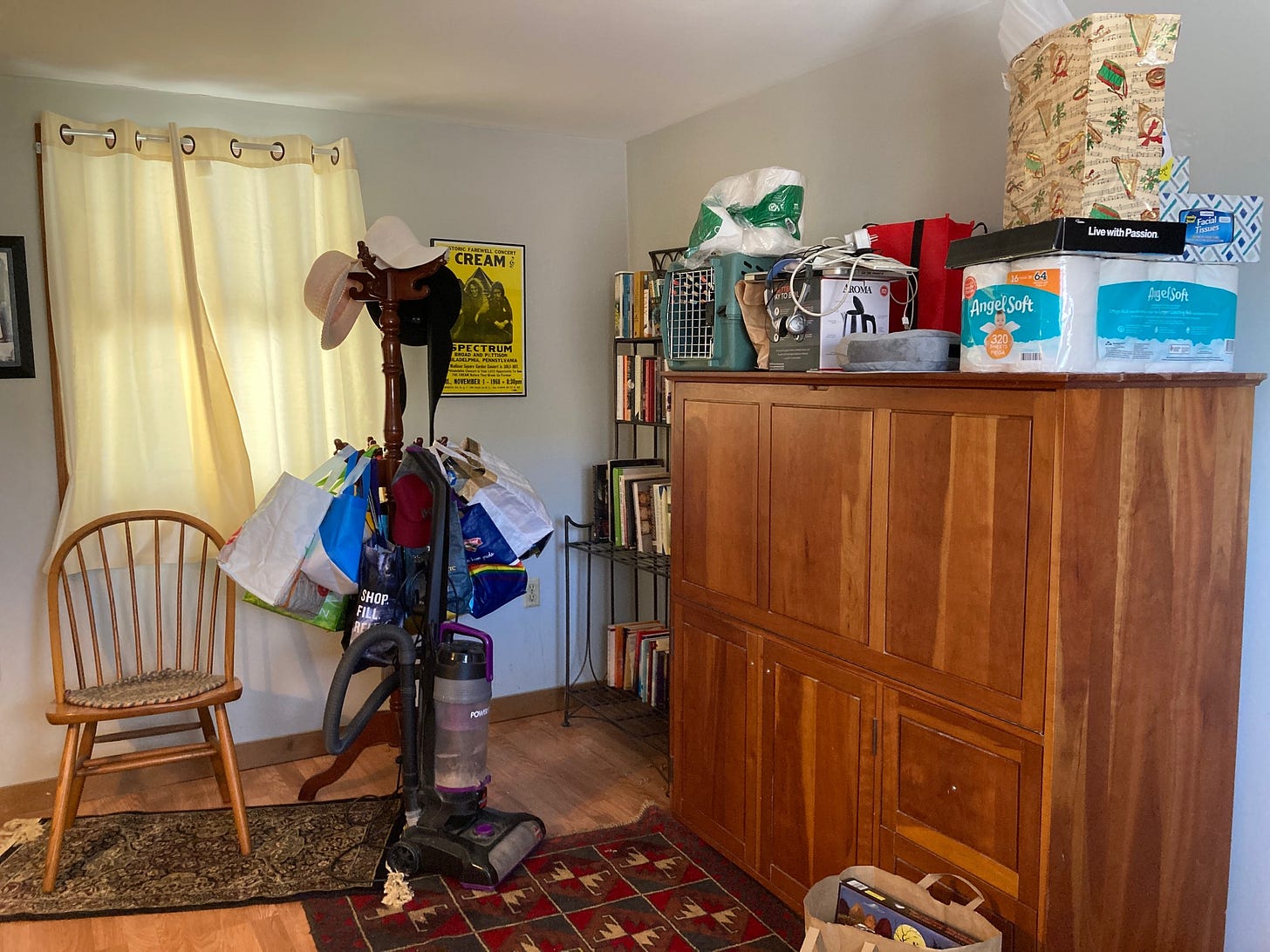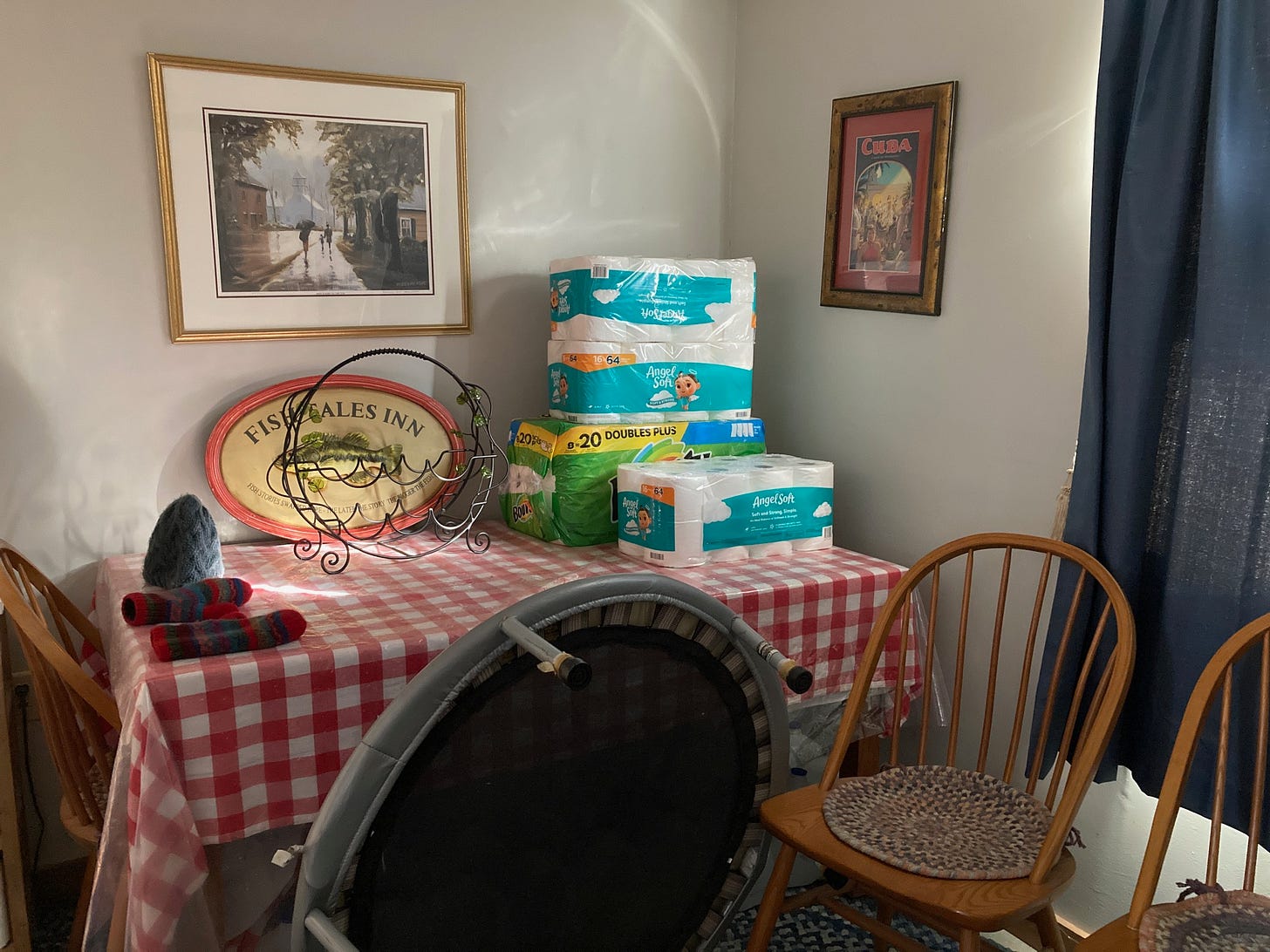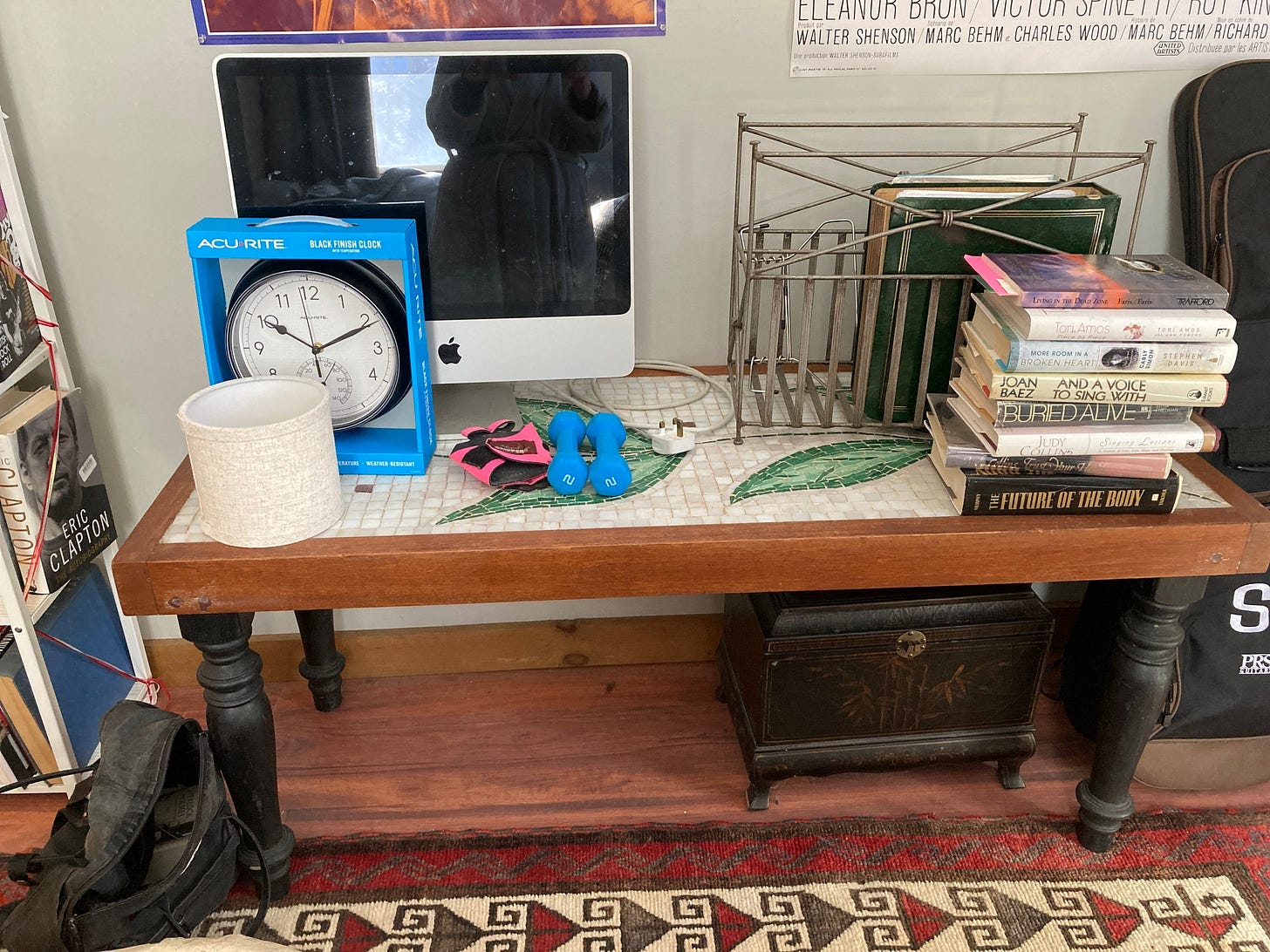Wellbeing Experiment #1 - Clutter clearing for physical, emotional, and mental wellbeing
Clear the deck by getting your physical environment ship-shape
Welcome to Week 1 of the Wellbeing Experiments and happy new year, everyone.
I have to admit that I have done this week’s approach before, so I already know how beneficial it is. But I need to do it again both to reap those benefits and to remind myself that my life would be significantly enriched if I did it more often.
Here we go. Enjoy!
This week’s approach
Clearing physical clutter to bring mental and emotional as well as physical benefits
Purported benefits
According to clutter clearing guru Karen Kingston (see resources below), “Clutter accumulates when energy stagnates and, likewise, energy stagnates when clutter accumulates. So the clutter begins as a symptom of what is happening with you in your life and then becomes part of the problem itself because the more of it you have, the more stagnant energy it attracts to itself.”1
Per Karen, having clutter can cause the following energetic problems in your life:
making you feel tired and lethargic
keeping you mired in the past and unable to move forward
congesting your body
serving as a barrier to the world
preventing clarity and fostering confusion by serving as a distraction
affecting how others treat you
contributing to your procrastination
causing disharmony in your relationships with others
making you feel embarrassed or ashamed (and influencing your desire to have guests)
putting your life on hold
depressing you
creating excess baggage in your life and travels
dulling your enjoyment of life
causing extra cleaning
making you disorganized
creating a fire or health hazard
costing you financially
distracting you from important things.
What to do
Here are the simplified steps I plan to use and recommend to those of you who wish to join me in clutter-clearing this week:
Step 1: Find a cluttered area that’s really bothering you
Hoo-boy, I’ve got a bunch of these. I’d really like to do my whole place this week. We’ll see how far I get, but there are some spots that bother me a lot — see the next step for photos of these — and said spots will be my priority.
For a lot of people, attics, garages, and toolsheds are areas they would love to clear out and reorganize as these are prime clutter zones.
Step 2: Document the area ‘before’ you work your magic on it
I recommend taking a ‘before’ photo of the area you plan to clutter-clear. There’s nothing like a ‘before’ and ‘after’ picture to capture your achievement and celebrate your progress.
Here are the areas where I have clutter that is driving me crazy. First, a closet where I’ve been throwing junk and collecting bags I never use:
Same room, with the top of the cabinet covered with junk, a coat tree loaded with shopping bags rather than holding coats and hats as it should be, a vacuum cleaner left in the middle of the floor, a rug thrown down with a random chair on top of it:
A table I’m unable to use because it has toilet paper and paper towel supplies, an empty wine rack, a present for someone (the fish plaque), and a drying hat and pair of gloves on top of it, not to mention a rebounder leaning against it:
A stack of jigsaw puzzles that look like they’re going to tip over any minute now, next to a lifesize cardboard Chris Pine a friend sent me during lockdown as a joke:
A tiletop table with a lovely design covered in a lampshade I don’t like, an old iMac I continue to use to watch DVDs, a clock still in its box, a magazine rack with photo albums, some weights and weight gloves that need to have their own storage space, and books that need to be shelved:
If you want to motivate yourself, send your ‘before’ photos to me at ellenendwell@proton.me and tell me what you plan to do. You can then send me the ‘after’ photos when you finish and we can celebrate your achievement together.
Step 3: Start small, small, small!
Contrary to popular belief, your job is not to attack everything all at once. What you want to do is focus on one small piece of what you want to clear, which could be:
a drawer
a storage box
a shelf
a corner of a room or closet
on top or underneath something (usually a table, bed, or other piece of furniture)
behind a door
along a passageway.
What you choose needs to be something that feels doable, that does not feel overwhelming.
The idea is to get a feeling of achievement and momentum, which will provide validation for what you are doing and will, without your realizing it, flood your body with endorphins that actually make you feel keen to do more (to get more of that pleasurable feeling).
Once you’re done, you want to be able to say, “That wasn’t bad at all, and wow, look how great that looks now!”
Step 4: Use some professional techniques
The famous clutter clearing expert Marie Kondo advises removing everything and putting all of it on the bed or a tabletop so you can see everything that you’ve got.
As you examine each item, Karen Kingston recommends having a bag or box for these five purposes :
A repairs box — things that need fixing
A recycling box — things to be sold, donated, given away, or taken for recycling, like all those paper bags I’ve got in my closet
A transit box — things that need to go elsewhere in your home, like my books that need to be reshelved
A trash box — things that are junk and need to go in the trash, like that torn Christmas bag on my cabinet (which is not recyclable)
A dilemma box — things you’re not sure what to do with and want to hold off on making a decision.
Karen Kingston recommends that you ask yourself three questions in deciding whether to keep something, what she calls ‘the clutter test’:
“Does it lift my energy when I think about it or look at it?
Do I absolutely love it?
Is it genuinely useful?”2
Whatever doesn’t go in the five bags or boxes, i.e., whatever you’ve decided to keep, will go back in the area you’ve cleared, but now you should organize and arrange the items with these three aims in mind:
keeping like with like, so similar items like pencils or t-shirts or rubber bands are grouped together
putting the things you use the most in the most accessible areas, and the things you use less often in the least accessible areas
arranging things in an aesthetically pleasing way.
Relax and enjoy it, because nothing is carved in stone. Things can be rearranged if you find they’re not in the ideal places.
Step 5: Take an ‘after’ photo
Once you’ve finished this piece, take an ‘after’ photo to compare to the ‘before’ photo. If you’re like me, you will feel a great deal of pleasure and pride when you see what you’ve accomplished, even for something as small as a drawer or shelf.
I have to admit, I often go back and look at it again and again, marveling at how a little elbow grease has made it look so much better.
Step 6: Reward yourself
I’m a big believer in additional rewards to sweeten the experience. I’m talking about something small but pleasurable, which could be:
showing the photos to someone you know will exclaim over them and praise you for what you’ve done — if you need someone to do that, send them to me!
having a game of catch with your kid/dog or a cuddle with your kid/partner/cat
listening to one of your favorite songs
having a small treat, like a piece of chocolate
anything that keeps your spirits and motivation high.
If you’ve got momentum, you might want to just keep going and have a treat later. For me, it can be pleasurable simply knowing that there is a treat waiting for me when I’m finished clutter-clearing for the day.
Step 7: Return to Step 1 and do it again
Repeat this process with another small piece, and keep doing this over and over until you’ve reached your clutter clearing goal.
You don’t have to do this all at once. Do it so it fits in your schedule, and do it in a way that feels motivating and pleasurable for you.
Keep in mind that you won’t keep coming back to this wellbeing approach if you can’t find a way to make the benefits of doing it seem greater than the cost in terms of your time and energy.
My photos notwithstanding that suggest otherwise, I actually love clutter clearing. But I’ll wait until the end of the week to talk more about how it makes me feel and the benefits I’ve experienced.
Step 8: Read Karen Kingston’s book for advanced strategies
Let me also say that there are different strategies that can be used to address different types of clutter. For instance, Karen specifically talks about the following:
paper clutter - books, clippings, papers, files, photos, sentimental memoribilia
electronic clutter - emails, texts, folders, files, etc.
equipment and gadget clutter - leisure, music, exercise, health & beauty, garden, car, and other forms of equipment; old eyeglasses; old audio-visual stuff
collections
clothing
unwanted gifts
saved boxes
other people’s clutter
She also talks about how to stay clutter-free.
MY FINAL PIECE OF ADVICE — PLAY SOME KICK-ASS ROCK ’N’ ROLL WHILE YOU DO IT!
I’ll check back in with the results, and our wellbeing approach for Week 2, next Sunday. Have a great week and see you then!
Resources
Clearing Your Clutter with Feng Shui, by Karen Kingston — This is my favorite clutter clearing resource, and I also recommend her book Creating Sacred Space with Feng Shui
Clearing Your Clutter with Feng Shui, by Karen Kingston (1st US edition, 1999), p. 11.
Ibid, p. 122.







